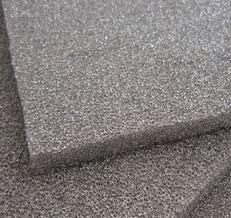Iron Nickel Foam, also known as Fe-Ni foam or iron-nickel alloy foam, is a porous material composed of a combination of iron (Fe) and nickel (Ni) metals. It possesses a three-dimensional network structure with interconnected voids or pores. Iron Nickel Foam exhibits unique properties that make it valuable in various applications. Here, we will explore its usage value:
Energy Storage: Iron Foam has excellent electrochemical properties, making it suitable for energy storage devices such as batteries and supercapacitors. Its high porosity provides a large surface area for electrochemical reactions, enhancing the performance and energy storage capacity of these devices.
Catalysis: The porous structure of Nickel Foam allows for increased surface area, facilitating catalytic reactions. It can be used as a catalyst support in various chemical processes, including hydrogenation, oxidation, and carbon dioxide capture. The high surface area and controlled pore size distribution of the foam contribute to efficient catalytic performance.
Heat Transfer: Iron Nickel Foam exhibits good thermal conductivity due to its metallic nature. It can be utilized in heat exchangers, cooling systems, and thermal management applications. The foam's high porosity enables effective heat transfer and dissipation, making it useful in thermal regulation and energy-efficient systems.
Filtration and Separation: The interconnected pores of Iron Nickel Foam allow it to function as a filter or separator in applications where gas or liquid filtration is required. The foam's porosity can be tailored to specific requirements, enabling effective separation of particles, gases, or liquids based on size or composition.
Structural Applications: Iron Nickel Foam possesses a combination of lightweight and mechanical strength. It can be used as a structural material in industries such as aerospace and automotive, where weight reduction and mechanical stability are crucial. The foam's high porosity also contributes to energy absorption and impact resistance, making it suitable for applications requiring cushioning or vibration damping.
Sound Absorption: The porous structure of Iron Nickel Foam enables efficient sound absorption. It can be used in architectural and industrial settings to reduce noise levels and improve acoustic performance. The foam's porosity and material properties help attenuate sound waves and minimize sound transmission.
Chemical Filtration: The interconnected porosity of Iron Nickel Foam can be utilized in chemical filtration processes. It can act as a medium for removing contaminants or impurities from liquids or gases. The foam's unique structure allows for effective filtration and purification in applications such as wastewater treatment, air purification, and gas separation.
The usage value of metal Foam extends across various industries, including energy storage, catalysis, thermal management, filtration, structural applications, and acoustic control. Its tailored porosity, excellent electrochemical properties, thermal conductivity, and mechanical strength make it a versatile material with significant potential for innovation and practical applications.
12 No. 62 Yuanshan North Road, Huli District, Xiamen City, Fujian Province, China
tel :
+86-592-7296029email :
Daisy@foam-material.comCopyright © Cheap Copper Foam, Iron Nickel Foam, Titanium Foam All Rights Reserved. Powered by dyyseo.com
 Daisy@foam-material.com
Daisy@foam-material.com
